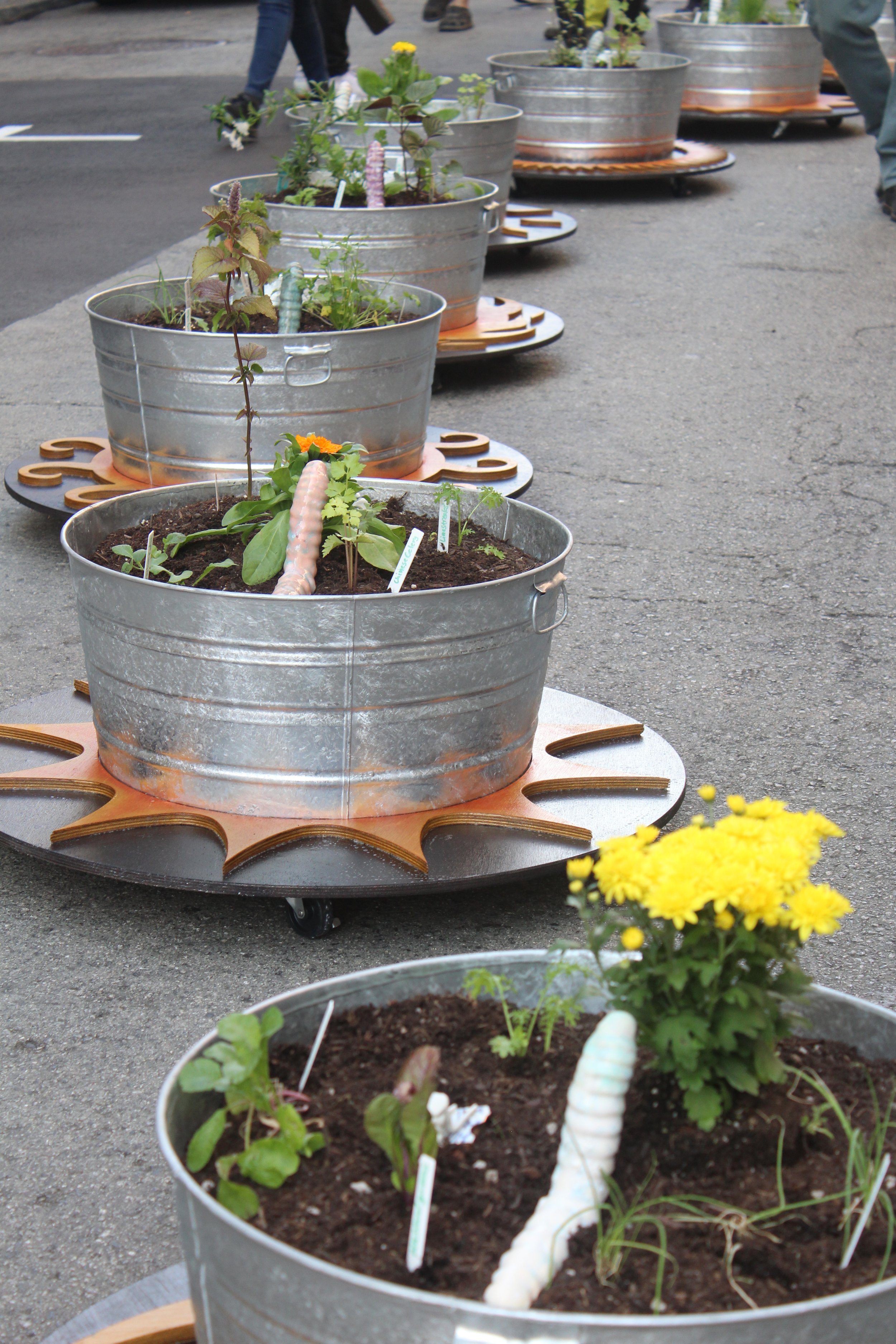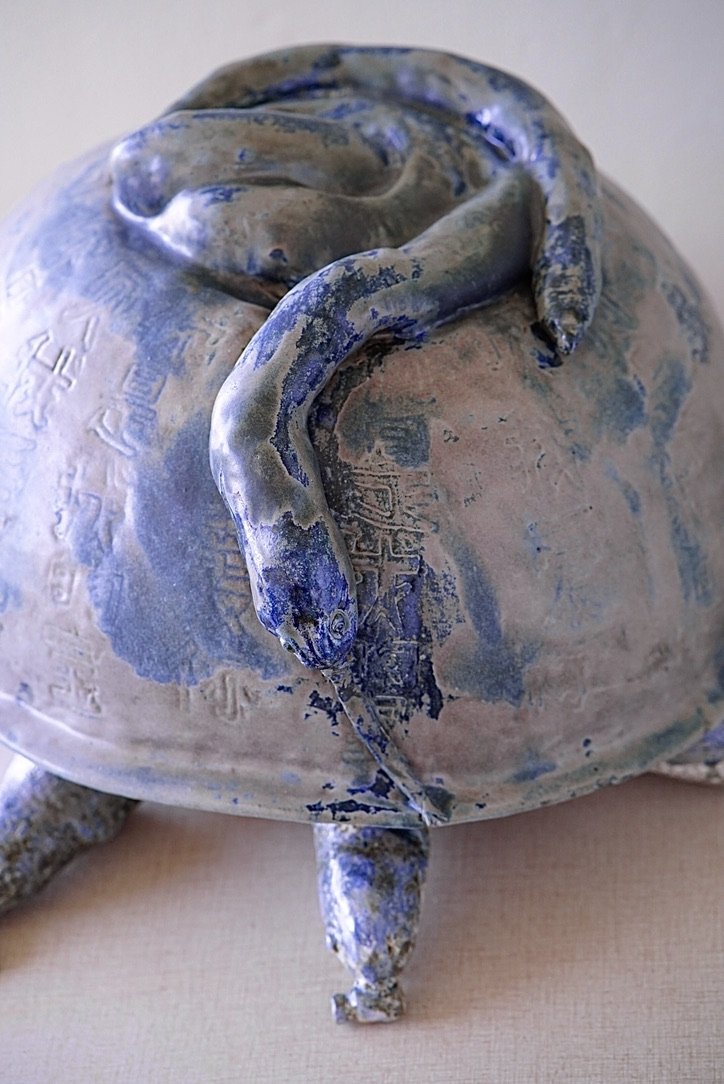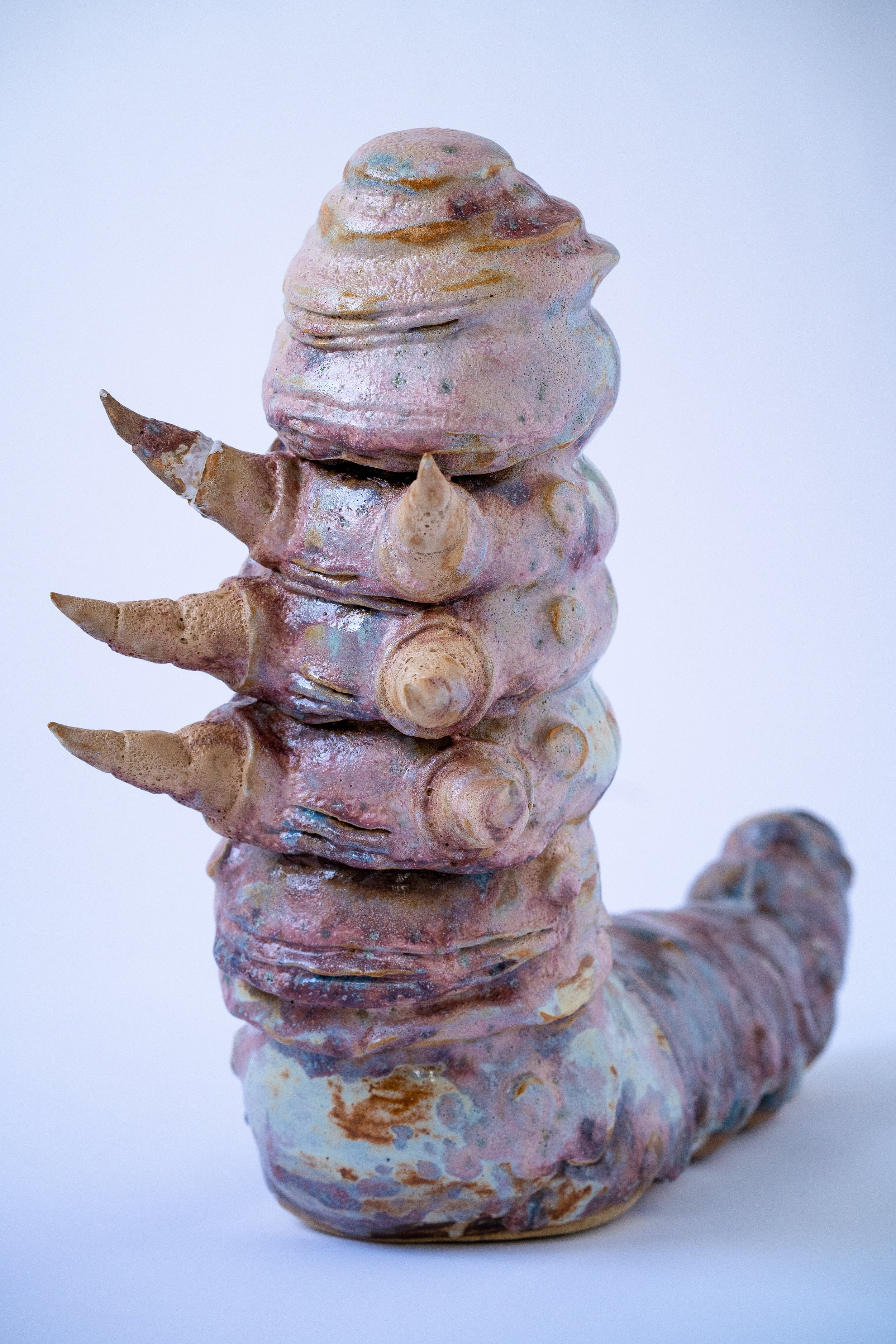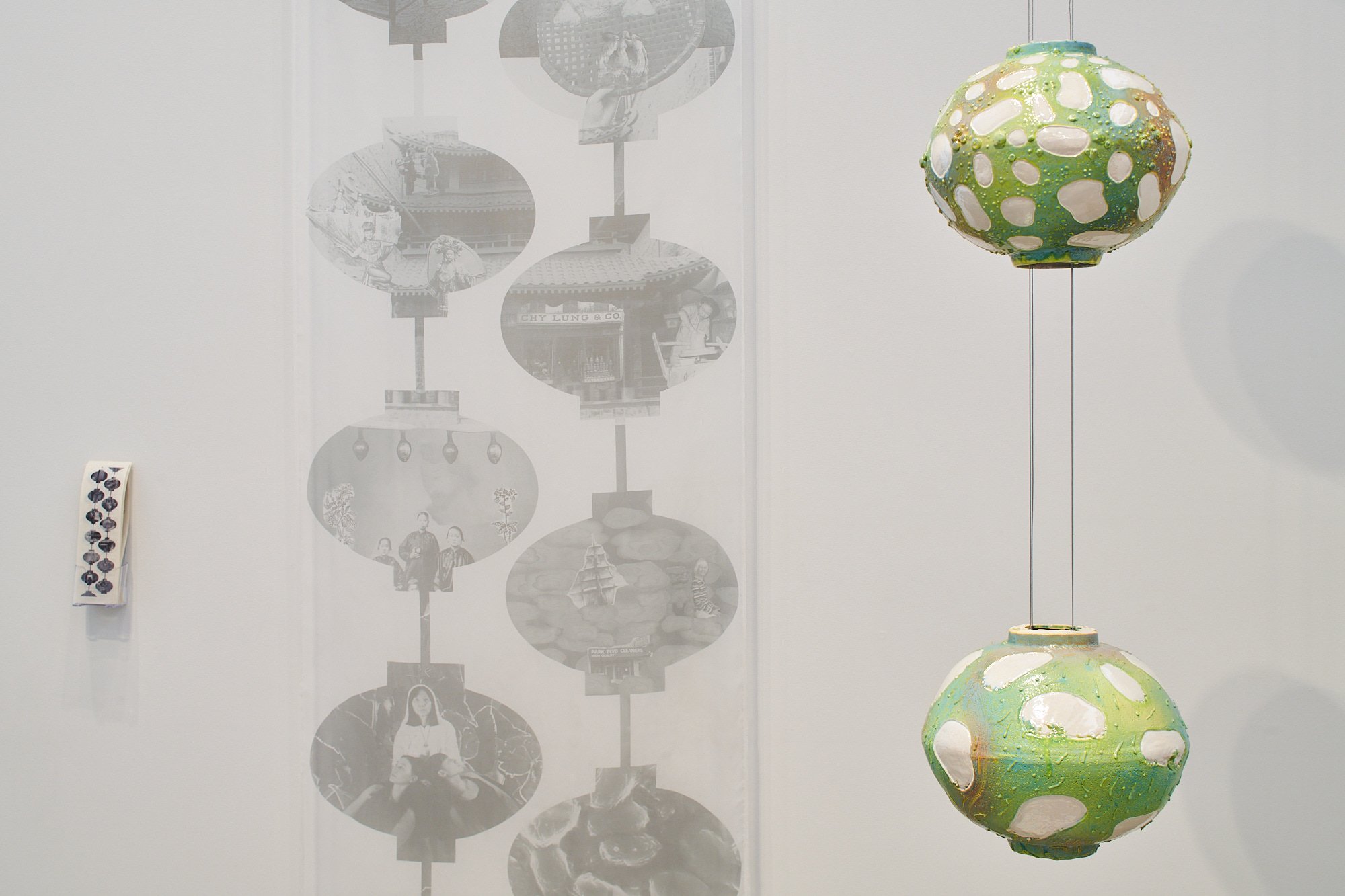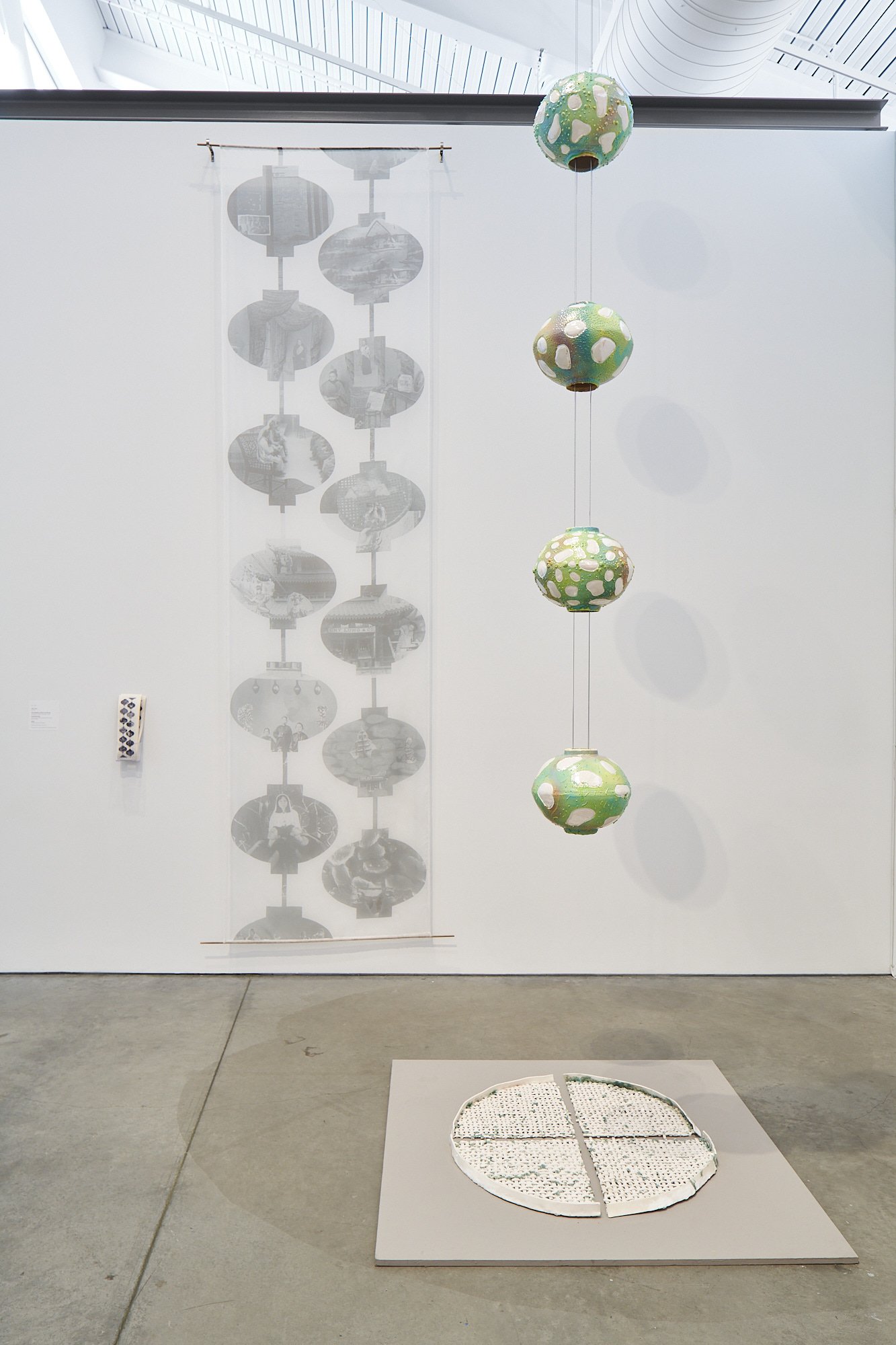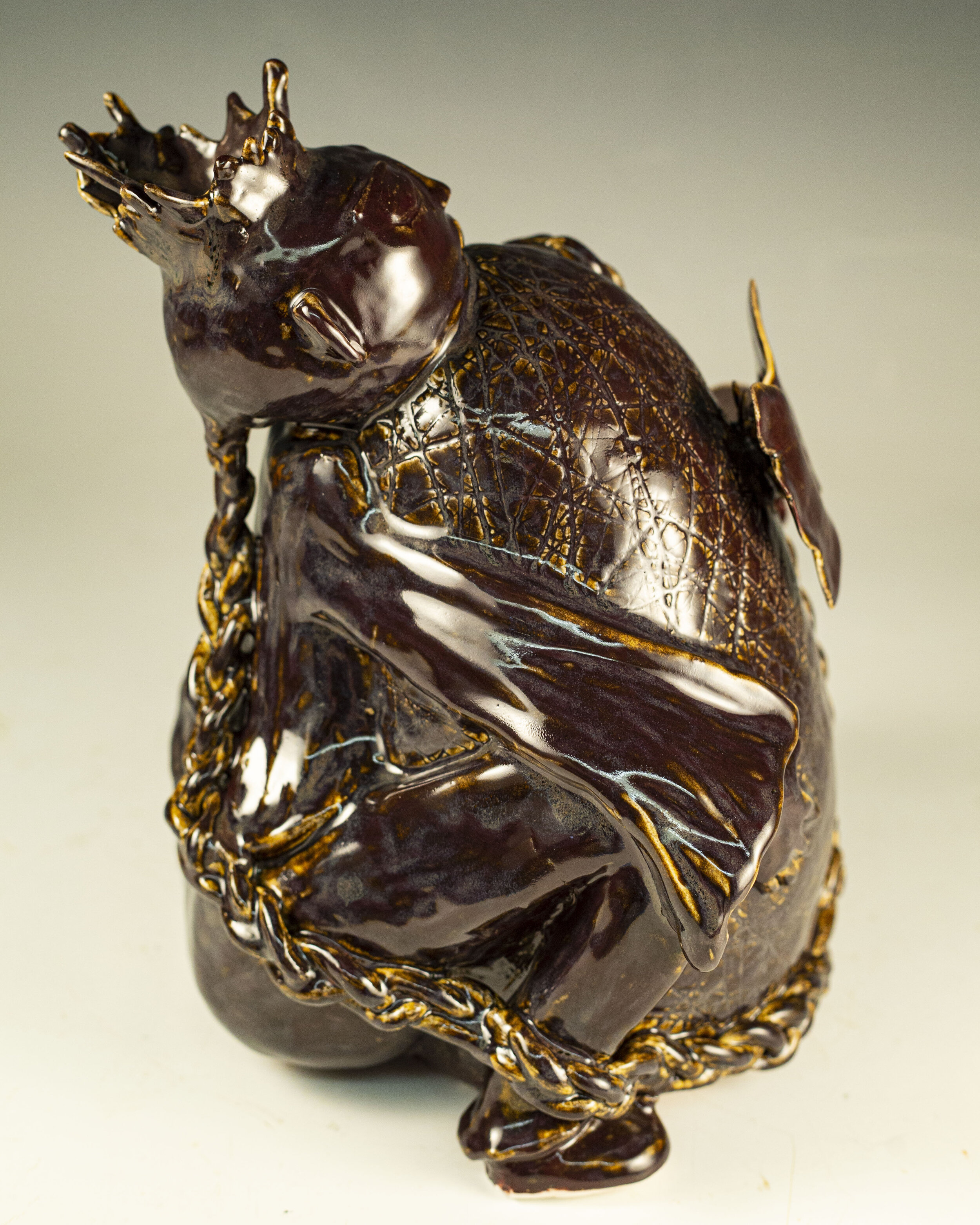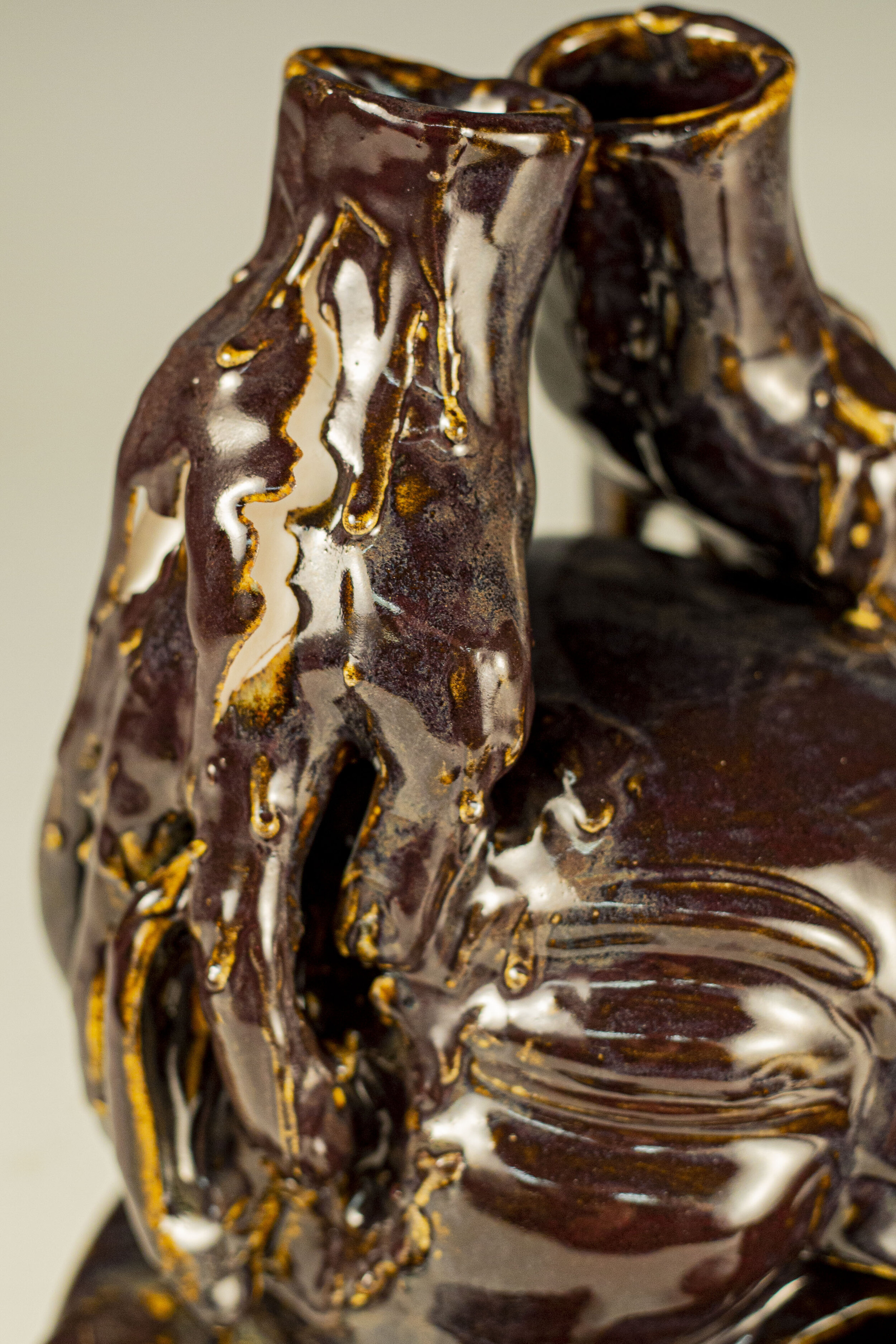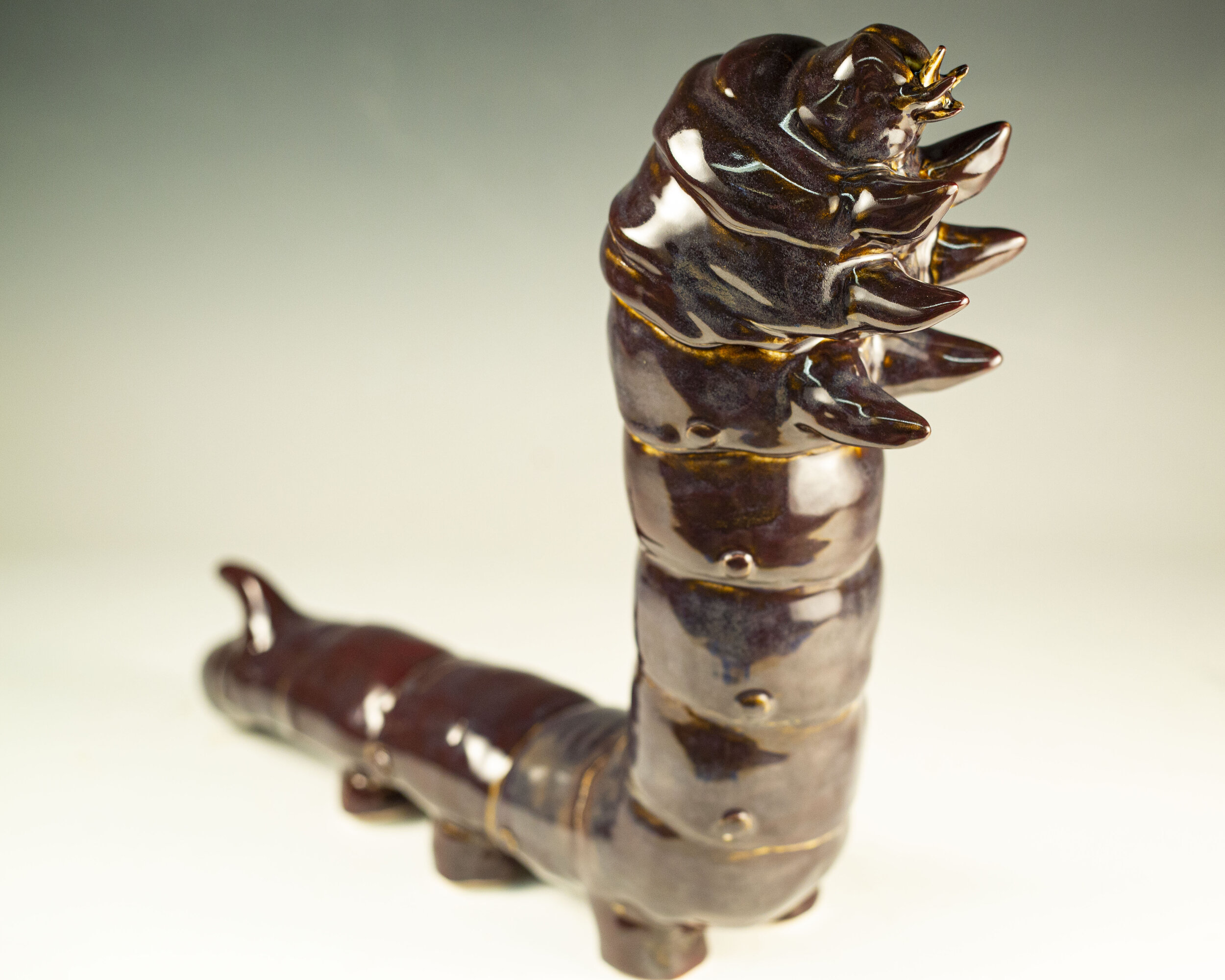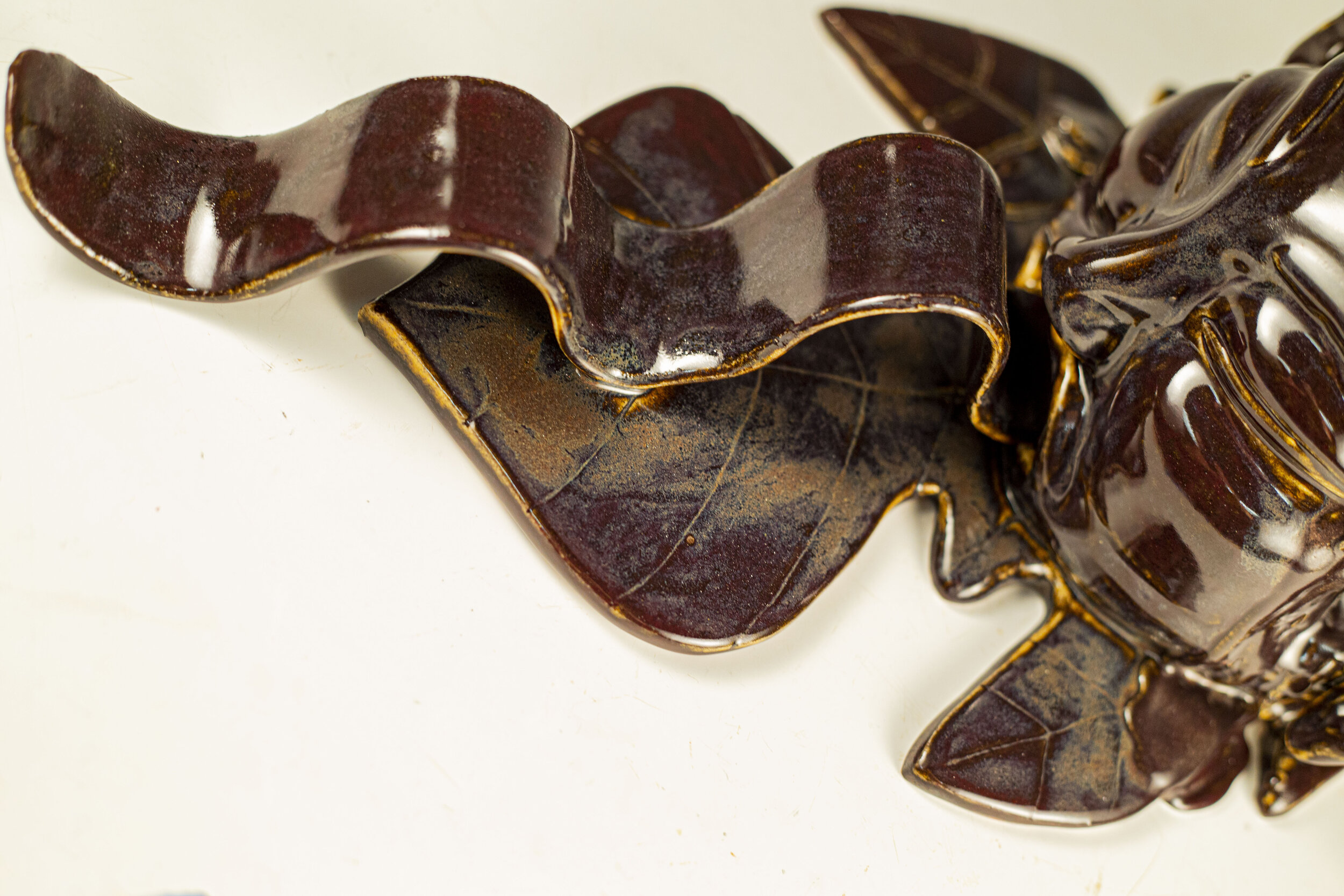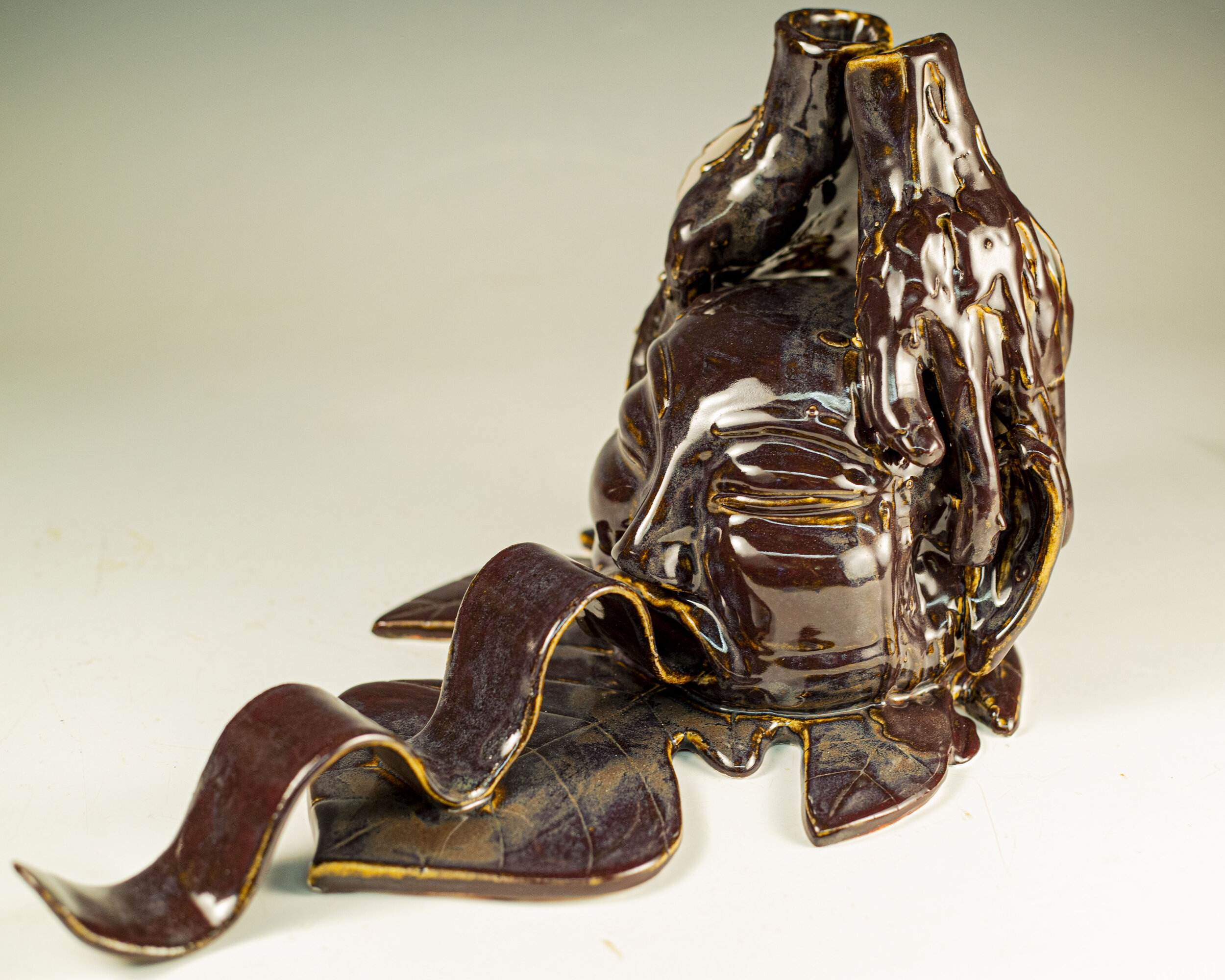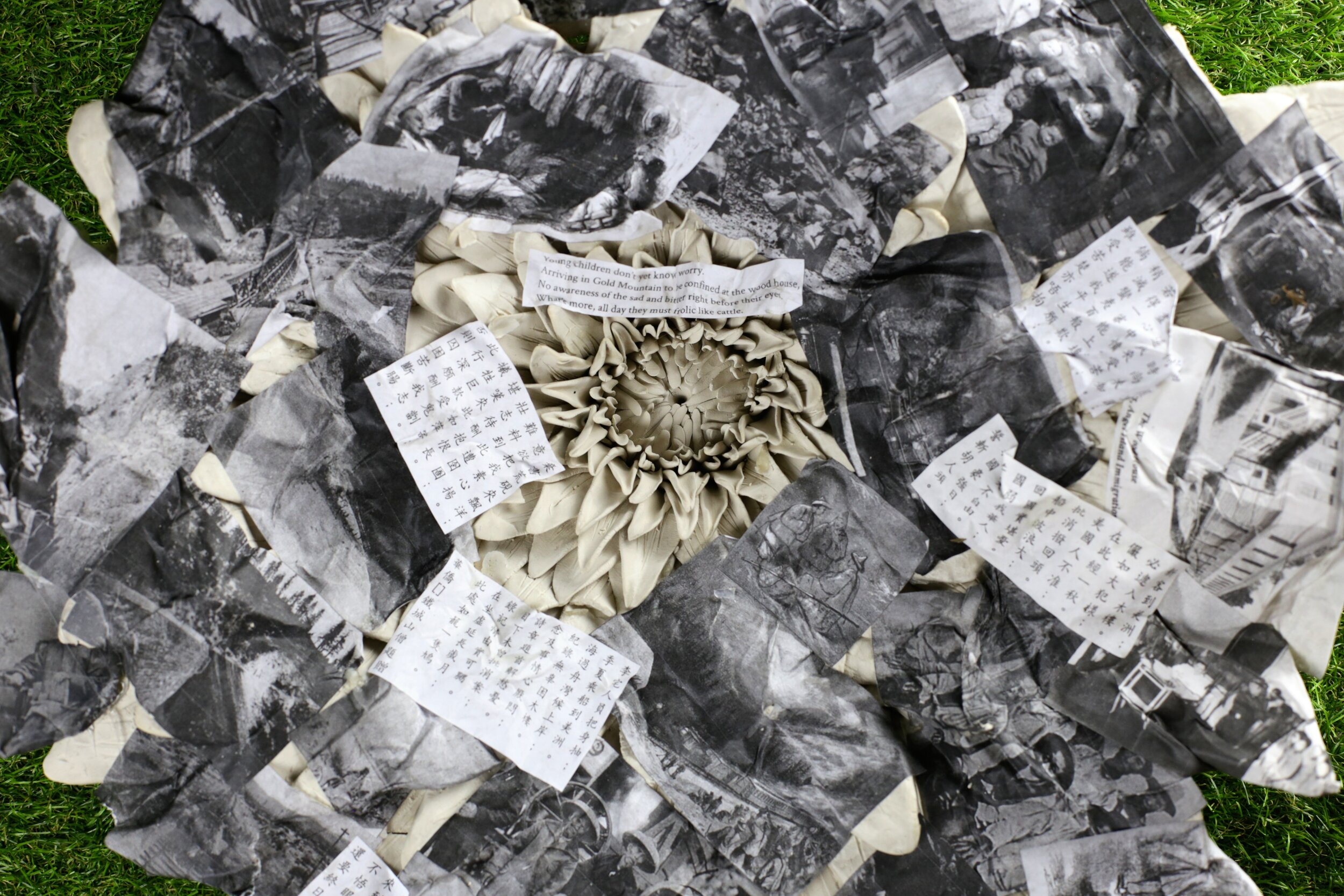Under the Same Sun with Edge on the Square
September 30th, 2023
Chinatown’s 2nd Annual Contemporary Arts Festival
Photos by Edge on the Square, Joyce Xi and Henrik Kam.
凤凰我爱你, To See and Be Seen, To Love and Be Loved
Photo by Aidan Jung
凤凰我爱你, To See and Be Seen, To Love and Be Loved
2023
18 in x 19 in x 27 in h
Ceramic, glaze
The Phoenix is perhaps one of the most known and auspicious of Chinese mythological beings. Its rare appearance is foretelling of harmony and played a key role in the creation of the cosmos. The Phoenix also represents immortality and both masculine and feminine qualities, transcending gender binaries and moving through time, space and lifetimes. My Phoenix has my partner’s top surgery scars, and has intentional detailed cracks where I removed and replaced the chest as a ritual part of creating this piece.
慢慢, slow
Photo by Aidan Jung
In ancient Chinese mythology, the tortoise with the snake wrapped over its shell is one of four symbolic creatures each pointing in a different direction. As a starting point for creating my queer take on Chinese mythology, I began with the snake and turtle, the north. While I significantly altered the symbolic creatures of each of the other directions, I chose to keep this one the same - a turtle and a snake signifying the element of water; and of stability, happiness and longevity. I added a bottle of testosterone in the mouth of the turtle, and carved on its back “我爱你。你是我的宝贝。” (I love you. You are my treasure.)
慢慢, slow
2023
20 in x 20 in x 13 in h
Ceramic, glaze
合家平安 May our family be safe and peaceful.
Photo courtesy of Edge on the Square, 2023

